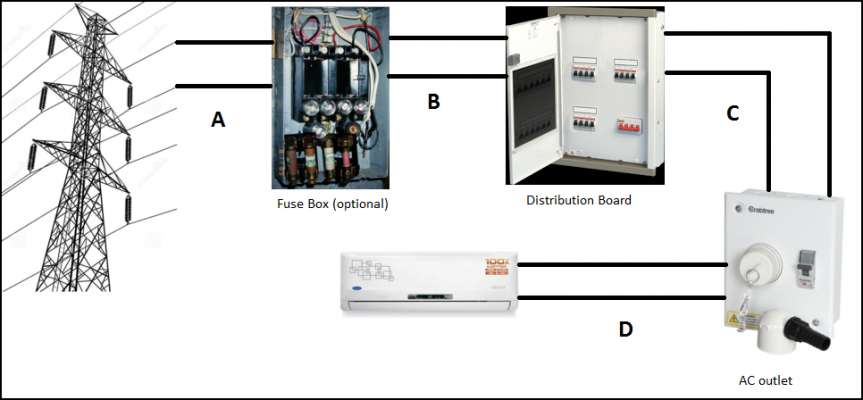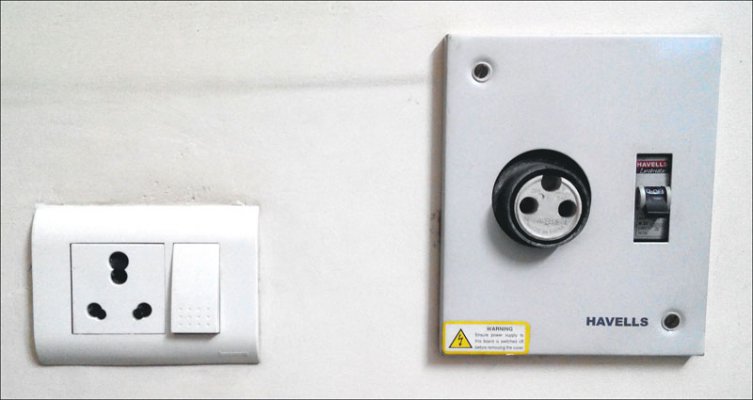You may consider this or similar box, this is asthetically more pleasing....
http://www.havells.com/content/have.../designer-db/dboxx-mcb-protected-socket.html#
http://www.havells.com/content/have.../designer-db/dboxx-mcb-protected-socket.html#






